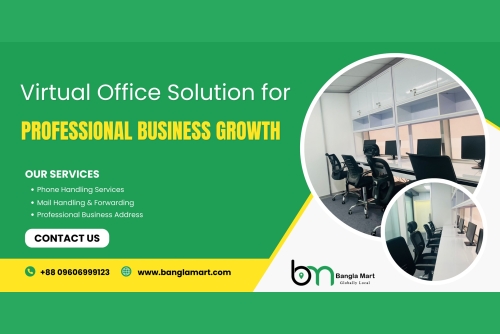A well-crafted business plan is a crucial element of any successful business venture. It serves as a roadmap, guiding entrepreneurs through the various stages of business development, from ideation to execution. Aden Wong, a respected authority in business strategy and planning, has shared valuable insights on how to create a business plan that not only attracts investors but also sets the foundation for long-term success. In this article, we’ll explore the key components of a winning business plan, drawing on the expertise of Aden Wong.
Why is a Business Plan Important?Provides Direction and Focus
A business plan outlines your business goals and the strategies to achieve them. It provides a clear direction, helping you stay focused on your objectives and avoid distractions.
Attracts Investors and Funding
Investors and lenders require a comprehensive business plan to assess the viability of your business. A well-structured plan demonstrates your understanding of the market, your business model, and your financial projections.
Facilitates Decision-Making
A business plan helps you make informed decisions by providing a detailed analysis of your business environment, competition, and risks. It acts as a reference point for evaluating new opportunities and potential challenges.
Measures Progress
By setting clear goals and milestones, a business plan allows you to track your progress and make necessary adjustments. This ensures that your business remains on the path to success.
Key Components of a Winning Business PlanAccording to Aden Wong, a successful business plan should include the following key components:
Executive Summary
The executive summary is the first section of your business plan, but it’s often written last. It provides a concise overview of your business, including your mission statement, product or service offering, target market, and financial highlights. Wong emphasizes the importance of making the executive summary compelling and clear, as it’s often the first (and sometimes only) part that investors will read.
Business Description
This section provides an in-depth description of your business, including its history, structure, and the problem it aims to solve. Aden Wong suggests clearly defining your business model and how it differentiates from competitors. This section should also include your business’s goals and objectives, as well as your value proposition.
Market Analysis
Market analysis is crucial for understanding the industry landscape and identifying your target market. Wong recommends conducting thorough research to assess market size, growth potential, customer demographics, and buying behavior. Additionally, analyze your competitors to understand their strengths and weaknesses, and identify opportunities for your business to gain a competitive edge.
Organization and Management
Investors want to know who is behind the business. This section should outline your business’s organizational structure, including the leadership team, key management roles, and their qualifications. Wong advises highlighting the experience and expertise of your team, as well as any advisors or board members who bring value to your business.
Products or Services
Describe the products or services your business offers in detail. Aden Wong emphasizes the importance of explaining the benefits of your offerings and how they solve the needs of your target market. If applicable, include information on the product lifecycle, research and development activities, and any intellectual property or proprietary technology.
Marketing and Sales Strategy
This section outlines how you plan to attract and retain customers. Wong suggests detailing your marketing strategy, including pricing, advertising, sales channels, and promotional tactics. Explain how you will reach your target market and differentiate your brand from competitors.
Financial Projections
Financial projections are a critical component of a business plan, providing a forecast of your business’s financial performance. This section should include income statements, cash flow statements, and balance sheets for the next three to five years. Aden Wong advises being realistic in your projections and backing them up with data and assumptions. Include a break-even analysis and discuss your funding requirements and how you plan to use the funds.
Funding Request
If you are seeking funding, this section should detail your funding requirements, including how much you need, how you will use the funds, and the type of funding you are seeking (e.g., equity, debt). Wong suggests clearly articulating how the funding will contribute to the growth and success of your business.
Appendix
The appendix is an optional section where you can include additional information, such as resumes of the management team, product images, legal agreements, and detailed research data. Wong advises using the appendix to provide supporting documents that enhance the credibility of your business plan.
Aden Wong’s Tips for Crafting a Winning Business PlanClarity and Conciseness
Wong emphasizes the importance of clarity and conciseness in your business plan. Avoid jargon and complex language, and ensure that your plan is easy to understand. Keep it concise while providing all the necessary details.
Focus on the Customer
A winning business plan is customer-centric. Wong suggests keeping your target customer in mind throughout the plan. Clearly articulate how your business will meet their needs and provide value.
Data-Driven Insights
Investors are looking for evidence that your business has a solid foundation. Wong recommends using data to support your claims, whether it’s market research, customer surveys, or financial projections. Data-driven insights add credibility to your plan.
Flexibility and Adaptability
While a business plan provides direction, it’s important to remain flexible and adaptable. Wong advises being open to revising your plan as you gather new information or as market conditions change.
Professional Presentation
The presentation of your business plan matters. Wong suggests using a professional layout, including clear headings, bullet points, and charts to make the plan visually appealing and easy to navigate.
Continuous Review and Improvement
A business plan is not a static document; it should evolve as your business grows. Wong recommends regularly reviewing and updating your plan to reflect changes in your business environment, goals, and strategies.
Common Mistakes to AvoidAden Wong also highlights some common mistakes to avoid when developing a business plan:
Overly Optimistic Projections
Being overly optimistic in your financial projections or market analysis can undermine your credibility. Investors prefer realistic and achievable goals.
Lack of Research
A business plan without thorough research is unlikely to succeed. Ensure that you invest time in understanding your market, competitors, and customer needs.
Ignoring Risks
Every business has risks, and ignoring them in your plan can be a red flag for investors. Wong advises acknowledging potential risks and outlining strategies to mitigate them.
Inadequate Focus on Execution
A great idea is only as good as its execution. Your business plan should clearly outline how you will implement your strategies and achieve your goals.
ConclusionDeveloping a winning business plan requires careful thought, research, and attention to detail. By following the guidance of experts like Aden Wong, entrepreneurs can create a business plan that not only impresses investors but also serves as a valuable tool for steering their business toward success. Remember to focus on clarity, customer value, data-driven insights, and adaptability as you craft your plan.












